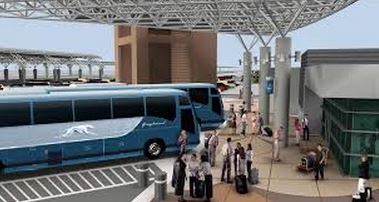Introduction
Transportation is an integral part of the functioning of the society. The transport system improves the social, economic, industrial, commercial progress and transfers the society into an organized one. It is one of the most essential services, vital force for determining the direction of development. To achieve the desired transportation balance and the system to be efficient, it is essential to provide organized facilities in the system, one such facility is a Bus Terminal. Buses forms the backbone of the public transport in any country and might also be the sole public transport available in some cases. Thus it becomes very important to take into account the planning considerations for bus terminals design.
As transportation involves the movement of the people and goods, there is a need of an “access point” in transport system to use it. These access points are known as “Terminals” or the fixed facilities. Terminals are one of the main components of any mode of transportation.

Terminals Classification
Terminals can be classified broadly in 4 categories according to the vehicle/facility they serve. These names are:
- Bus terminals
- Rail terminals
- Airport terminals
- Ports
Bus terminals are predominantly used for inter-city and intra-city movement because of the higher accessibility of bus terminals. These are the places with very high volume of pedestrians which might be looking for another transport mode to continue their journey and reach their destination. There are various functions associated with bus terminals and a well planned bus terminal must cater to all the purposes listed below.
Terminals serve as a point of:
- Concentration
- Dispersion
- Loading/unloading of the passengers
- Interchange of mode
- Storage of passengers and vehicles
- Maintenance of vehicles
- Facilities and amenities for the users and crew
- Documentation of movement
- Information system
- Integration of various systems of transportation
Facilitation of these activity makes them more and more user friendly. This also helps in saving time and money of users along with providing a good journey experience. The significance of a particular type of activity may vary depending on location, purpose being served, types of users etc.
Not all the activities take place in all type of terminals and thus the facilities provided are generally restricted on the basis of the hierarchy of bus terminal. The mathematical standards forms a part of design and civil engineering and varies from country to country. No standard measurements are adopted worldwide as the needs of differ throughout the world. The number, nature and type of facility increases with the hierarchy which is based upon the population being served. A workable hierarchy of bus terminals is as follows:
- Road based bus stop
- Road side bus bay
- Bus stop distributed
- Sub-nodal terminal
- Nodal bus terminal
- Inter-city bus terminal and inter-state bus terminal(ISBT)
This article discusses the planning criteria and norms and standards that are considered for planning and design of bus terminals. Measurements and exact dimensions have been omitted as they form a part of construction. The usefulness or functionality of bus terminal is being looked at in this example. ISBT at Gandhinagar, Gujrat is taken as an example of a bus terminal and is discussed under the light of the above.
Planning Criteria for Bus Station
In general, the four basic planning criteria for planning of terminals are –
- Need
- Size
- Location
- Design
- Need – Need of the terminal arises with increase in the demand. An organized bus terminal should meet the following requirements
- Accessibility
- Comfort and convenience
- Safety
- Easy processing
- Size – The following factors are considered to characterize the size of the terminal and its functions
- Flow of traffic
- System characteristics
- User characteristics
- Location – The selection of the location should satisfy the following criteria
- It should form a component in the hierarchy of transport systems
- It should be a component in the hierarchical system of transportation terminals
- The concentration and dispersal costs should be minimum
- It should be located such that as point of coordination and integration between inter-city and intra-city transport
- Design – Following points should be kept in mind for efficient workability of terminal
- Segregation of bus and non-bus traffic
- Segregation of pedestrian and vehicular movement
- Elimination of vehicular traffic conflict
- Segregation of pedestrian flows
- Minimum processing for the buses
- Segregation of transportation and no-transportation activities
Terminal performance and efficiency indicators
Terminal performance and efficiency parameters for the management of bus terminal includes-
- Number of buses that can be handled in one day
- Number of buses arriving at the terminal during peak hour (handling capacity)
- Average alighting time and boarding time (should be minimum)
- Average bus idling time
- Waiting time at the counters
- Fees collection
- Number of complaints
Read about: TBS Land Airbus, Traffic Volume Count